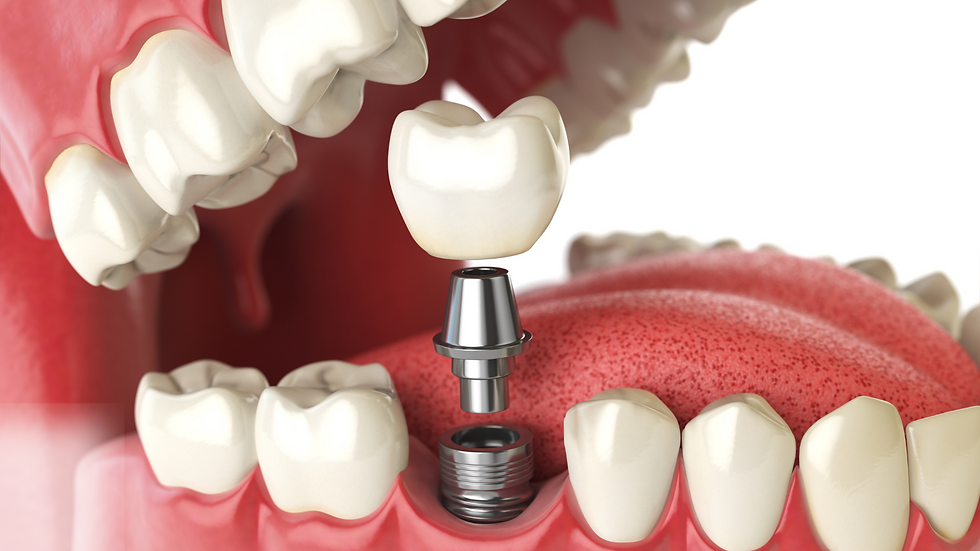The Surprising Link: How Cholesterol Affects Your Oral Health
- Bridge Street Dental Surgery
- 4 days ago
- 3 min read
October is National Cholesterol Month here in the UK, a time to raise awareness about a condition that affects a huge portion of our population. NHS data reveals that around 59% of UK adults live with high cholesterol (hyperlipidaemia).

We all know cholesterol is linked to heart health, but you might be surprised to learn it also has a connection to your oral health.
As your local Tadcaster dental team, we believe in the "mouth-body connection" – the idea that your oral health is a window to your general wellbeing, and vice versa. This link is a perfect example.
A Quick Refresher: 'Good' vs. 'Bad' Cholesterol
Before we get to the dental part, let's quickly recap. Cholesterol itself isn't bad; our bodies need it. The issue is the balance between two types:
'Good' Cholesterol (HDL): Think of this as the "helper." High-density lipoprotein (HDL) carries cholesterol away from your cells and arteries, back to the liver to be processed. This is essential for keeping your heart healthy.
'Bad' Cholesterol (LDL): This is the "clogger." Low-density lipoprotein (LDL) does the opposite, causing fatty deposits (plaque) to build up in your arteries. This is what we mean by "high cholesterol" – having too much of this 'bad' stuff.
The Mouth-Body Connection: Cholesterol and Your Gums
So, what does this have to do with your teeth? The research points to a significant link between high cholesterol and periodontal (gum) disease.
Studies show that individuals with gum disease often have higher levels of 'bad' (LDL) cholesterol and lower levels of 'good' (HDL) cholesterol.
While a direct cause-and-effect relationship hasn't been definitively proven in humans, the evidence is growing. Early studies suggest that high LDL levels may promote inflammation throughout the body, including in the delicate tissues of your gums. This can make you more vulnerable to gingivitis (early gum disease) and periodontitis (advanced gum disease).
Why Your Dental Check-Up is More Important Than You Think
This is precisely why your regular appointments at Bridge Street Dental are so much more than just a "scale and polish."
When you sit in our chair, we're not just looking for cavities. Your dentist and hygienist are expertly trained to spot the early warning signs of systemic health issues, and gum disease is a major one.
We check for:
Redness or swelling in the gums
Bleeding when brushing or probing
Gum recession
Deepening pockets between the tooth and gum
Catching gum disease early doesn't just protect your teeth; it's a crucial part of managing your overall inflammatory load and supporting your systemic health. By looking after your gums, you are also doing something positive for your cardiovascular system.
What Can You Do?
This month's national campaign is encouraging healthy habits with its 1-2-3-4-5 Food Challenge – a fantastic way to support balanced cholesterol levels through diet:
Week 1: One meat-free day a week
Week 2: Two portions of fish a week
Week 3: Three servings of wholegrains a day
Week 4: Four portions of beans or pulses a week
Week 5: Five portions of fruit and veg every day
From our perspective as your dental team, we'd add two more essential steps:
Maintain a fantastic home-care routine with brushing twice a day and cleaning between your teeth daily (with floss or interdental brushes).
Never skip your regular dental and hygiene appointments. These visits are your best defence against gum disease and allow us to spot any potential issues before they become serious problems.
Your health is a team effort. Looking after your diet supports your heart, and looking after your gums supports your whole body.
If you have any concerns about your gum health, or if you're due for a check-up, please get in touch with our friendly team here at our Tadcaster practice. We're here to help.
To book your appointment, call us today or use our online booking form.






1 Comment